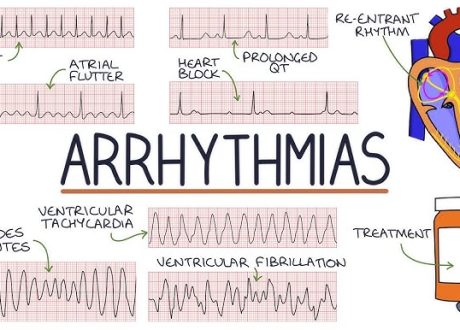Written by Jason Lesnick

This randomized controlled trial demonstrated a clinically significant difference in blood pressure measurements when inappropriately sized BP cuffs were used on patients.
Not too big, not too small, but just right
Prior studies looking at measuring BP using an automated oscillometric BP device have been limited by observational study design and setting (ICU, home). The authors conducted an RCT to determine the effects of using a regular adult BP cuff vs a BP cuff that is appropriately sized for an individual’s measured mid-arm circumference on automated BP readings. They hypothesized that using a too-large BP cuff (overcuffing) would result in lower BP readings and vice versa for undercuffing (using a too-small BP cuff).
They measured 4 sets of three identical BP measurements with the initial 3 sets in random order and the fourth always utilizing an appropriately sized cuff. The participants were asked to empty their bladder and walk for 2 minutes prior to having their BP measured. The BP measurements had 30 seconds between each one after an initial rest period of 5 minutes. This method of a two minute walk then 5 minute rest prior to measurement was repeated until all 4 sets were obtained.
The authors studied 195 adults in the community, 51% of whom had HTN, 20% of whom had diabetes. The data showed that when a small BP cuff was appropriate, regular BP cuff (1 size too large) measurements resulted in lower SBP with a mean SBP difference (regular minus appropriate) of −3.6 (95%CI −5.6 to −1.7) mm Hg.
When a large BP cuff was appropriate, regular BP cuff (1 size too small) measurements resulted in higher SBP with a mean difference of 4.8 (95%CI 3.0-6.6) mm Hg. When an appropriate BP cuff was extra large, regular cuff (2 sizes too small) measurements resulted in higher SBP, with a mean SBP difference of 19.5 mm Hg (95%CI 16.1- 22.9). When those who required an extra large cuff used a large cuff, this resulted in an approximately 10 mm Hg increase in SBP. Similar findings were observed when looking at DBP across different cuff sizes. These systematic differences based on cuff size alone could lead to significant overtesting and treatment in this population.
How will this change my practice?
I agree with the authors that the research staff had a meticulous method for measuring BP accurately in this study that likely means in real-world settings we would be even more inaccurate. This study makes a convincing argument that we need to be more vigilant in BP cuff selection and I know I will be!
Editor’s note: A SBP difference of up to 20 mm Hg matters. Not only could we over-treat presumed HTN, we could be falsely reassured with a SBP of 100 mm Hg in a larger patient, when their SBP is actually 80 mm Hg. ~Clay Smith
Source
Effects of Cuff Size on the Accuracy of Blood Pressure Readings: The Cuff(SZ) Randomized Crossover Trial. JAMA Intern Med. 2023 Aug 7;e233264. doi: 10.1001/jamainternmed.2023.3264. Online ahead of print.










